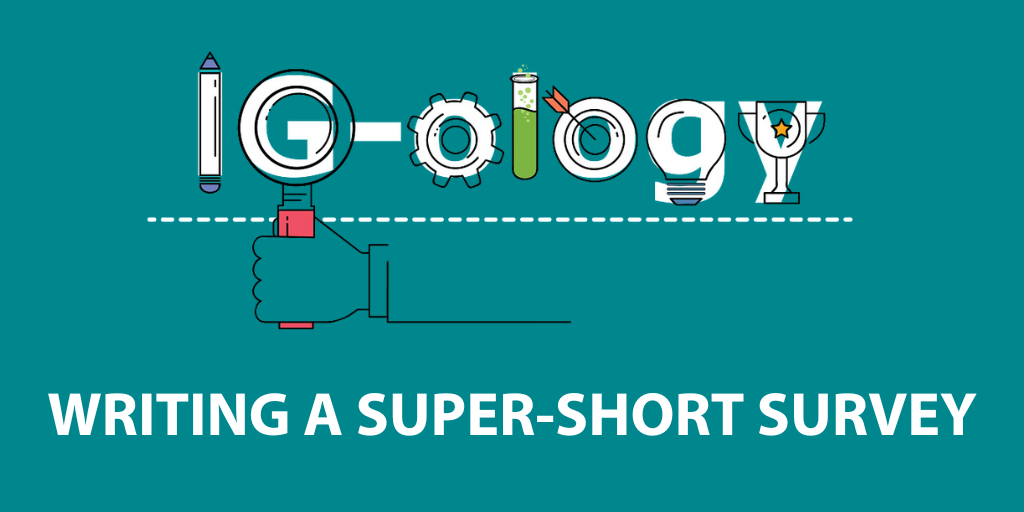
 Hi! I’m Trinity Alexander, an associate consultant at IG. One way I support projects is through providing survey expertise. We design surveys for many projects; winnowing down the length of a survey is always a goal. Sometimes we need to make surveys super-short—for example, in a recent case, a client had a goal for a survey to take only 5 minutes for participants to complete, knowing that would increase response rates.
Hi! I’m Trinity Alexander, an associate consultant at IG. One way I support projects is through providing survey expertise. We design surveys for many projects; winnowing down the length of a survey is always a goal. Sometimes we need to make surveys super-short—for example, in a recent case, a client had a goal for a survey to take only 5 minutes for participants to complete, knowing that would increase response rates.
Writing short surveys that still answer evaluation questions requires close partnership with clients and advisers from the anticipated survey population to understand what’s most important to know and the most efficient way to ask the right questions. I’ve found it helpful to:
- Prompt clients to consider how someone taking the survey will interpret questions or what answers they think a question will elicit. Then, having participant advisers review and pilot the survey validates these assumptions.
- Clarify an evaluation’s scope. In the example mentioned above, we also conducted focus groups and interviews with other stakeholders. We compared survey questions to these other tools to see if we can deprioritize survey questions that other methods address.
- Have a good understanding of the program being evaluated. This is helpful as we interpret feedback from the client and make suggestions about how to re-word survey items. It can also help to revisit the logic model and/or evaluation questions to make sure survey questions always tie back to the bigger picture.
- Have a good understanding of how the client will use the survey data—we don’t want to burden survey-takers with questions that won’t elicit useful data.
- Work in the way the client works best through the multiple iterations of revisions. Should we co-create the survey in real time with them? Or draft something and send it back-and-forth? Usually, a combination works best.
- Consider the survey format, as in how people take the survey and what it looks like. We aim for fewer questions that require more thinking time, like open-ended questions or ranking questions, opting instead for multiple choice questions. If it’s hard to narrow down what we need to ask, we can also “shorten” a survey by making the language simpler and making the questions less complex and more repetitive—such as grid questions that utilize the same answer choices for a series of questions (e.g., “How satisfied are you with” several different program elements).
I hope these tips are helpful for shortening your surveys—it’s worth the extra work to hopefully get higher response rates and better data, while lowering the burden for participants!
